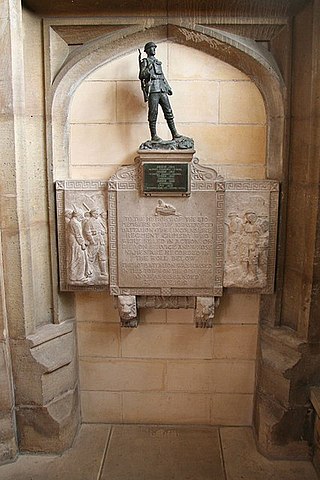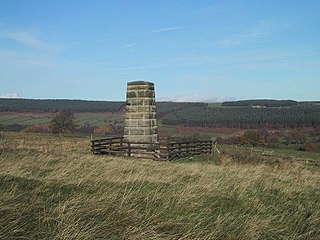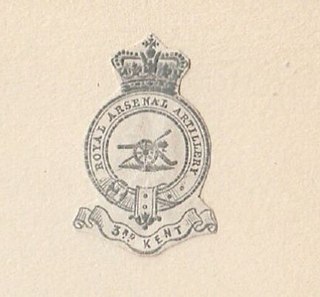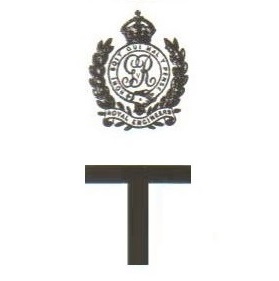
The Battle of the Somme, also known as the Somme offensive, was a major battle of the First World War fought by the armies of the British Empire and the French Third Republic against the German Empire. It took place between 1 July and 18 November 1916 on both sides of the upper reaches of the river Somme in France. The battle was intended to hasten a victory for the Allies. More than three million men fought in the battle, of whom more than one million were either wounded or killed, making it one of the deadliest battles in all of human history.
The 36th (Ulster) Division was an infantry division of the British Army, part of Lord Kitchener's New Army, formed in September 1914. Originally called the Ulster Division, it was made up of mainly members of the Ulster Volunteer Force, who formed thirteen additional battalions for three existing regiments: the Royal Irish Fusiliers, the Royal Irish Rifles and the Royal Inniskilling Fusiliers. The division served from October 1915 on Western Front as a formation of the British Army during the Great War.

The 31st Division was an infantry division of the British Army. It was raised in the Great War by volunteers from Kitchener's Army and formed in April 1915 as part of the K4 Army Group and taken over by the War Office on 10 August 1915. Comprising mainly infantry battalions from Yorkshire and Lancashire, the division was sent to Egypt in December 1915 before moving to France in March 1916 and spent the remainder of the First World War in action on the Western Front. The 31st Division was the quintessential New Army division, being made up entirely of Pals battalions.

The first day on the Somme, 1 July 1916, was the beginning of the Battle of Albert (1–13 July), the name given by the British to the first two weeks of the 141 days of the Battle of the Somme in the First World War. Nine corps of the French Sixth Army and the British Fourth and Third armies attacked the German 2nd Army from Foucaucourt south of the Somme, northwards across the Somme and the Ancre to Serre and at Gommecourt, 2 mi (3.2 km) beyond, in the Third Army area. The objective of the attack was to capture the German first and second defensive positions from Serre south to the Albert–Bapaume road and the first position from the road south to Foucaucourt.

Martin Middlebrook was an English military historian and author.
The Public Schools Battalions were a group of Pals battalions of the British Army during World War I. They were raised in 1914 as part of Kitchener's Army and were originally recruited exclusively from former public schoolboys. When the battalions were taken over by the British Army they became variously the 16th (Service) Battalion of the Middlesex Regiment and the 18th–21st (Service) Battalions of the Royal Fusiliers. However, Kitchener's Army was faced with a dire shortage of officers and so 'young gentlemen'— public schoolboys and university graduates, including many of those who had enlisted in the Public Schools Battalions — were encouraged to apply for commissions. The battalions' depleted ranks were made up with ordinary volunteers and although they retained the Public Schools titles, their exclusive nature was doomed. Two battalions remained to serve on the Western Front: the original battalion was all but destroyed on the first day of the Somme. After hard service both battalions were disbanded in February 1918 before the end of the war.

The Grimsby Chums was a British First World War Pals battalion of Kitchener's Army raised in and around the town of Grimsby in Lincolnshire in 1914. When the battalion was taken over by the British Army it was officially named the 10th (Service) Battalion, The Lincolnshire Regiment. It was the only 'pals battalion' to be called 'chums'.

George Sanders VC MC was an English recipient of the Victoria Cross, the highest and most prestigious award for gallantry in the face of the enemy that can be awarded to British and Commonwealth forces.

The Battle of Pozières took place in northern France around the village of Pozières, during the Battle of the Somme. The costly fighting ended with the British in possession of the plateau north and east of the village, in a position to menace the German bastion of Thiepval from the rear. The Australian official historian Charles Bean wrote that Pozières ridge "is more densely sown with Australian sacrifice than any other place on earth".

The Old Front Line (ISBN 0-85052-936-0) is a military history book by English poet John Masefield, first published in 1917.

The Leeds Pals were a First World War Pals battalion of Kitchener's Army raised in the West Yorkshire city of Leeds. When the battalion was taken over by the British Army it was officially named the 15th Battalion, The Prince of Wales's Own.
The Sheffield City Battalion was a 'Pals battalion' formed as part of 'Kitchener's Army' during World War I. Raised by local initiative in the City of Sheffield, it became the 12th (Service) Battalion of the local York and Lancaster Regiment. After almost two years of training, it was virtually destroyed on the first day of the Battle of the Somme in a disastrous attack on the village of Serre. The battalion continued to serve on the Western Front, including the Arras offensive, but it was disbanded early in 1918.

The Battle of the Boar's Head was an attack on 30 June 1916 at Richebourg-l'Avoué in France, during the First World War. Troops of the 39th Division, XI Corps in the First Army of the British Expeditionary Force (BEF), advanced to capture the Boar's Head, a salient held by the German 6th Army. Two battalions of the 116th Brigade, with one battalion forming carrying parties, attacked the German front position before dawn on 30 June. The British took and held the German front line trench and the second trench for several hours, before retiring to their lines having lost 850–1,366 casualties.

The article lists British Army reserve brigades in World War I. At the start of the war volunteers in the vast majority of cases joined their local infantry regiment's reserve battalion. As the army expanded rapidly, further reserve battalions and brigades were formed. After conscription was introduced in 1916 the existing regimental system could not cope with the large influx of recruits and the existing reserve brigades were incorporated into the Training Reserve, with an official complement of over 209,000 soldiers, in addition to the regimental training units.
The 89th Brigade was an infantry formation of the British Army during World War I. It was raised as part of 'Kitchener's Army' and was assigned to the 30th Division. After the original formation was converted into a reserve brigade, the number was transferred to the Earl of Derby's brigade of 'Liverpool Pals'. The brigade landed in France at the end of 1915 and then served on the Western Front for the rest of the war, seeing action at the Somme, Arras, and Ypres. Virtually destroyed during the German spring offensive of 1918, it was reconstituted in time to take part in the final battles of the war.
The 91st Brigade was an infantry formation of the British Army during World War I. It was raised as part of 'Kitchener's Army' and was assigned to the 30th Division. After the original formation was converted into a reserve brigade, the number was transferred to a brigade of 'Manchester Pals'. The brigade landed in France at the end of 1915 and was transferred to the Regular 7th Division. It saw action at the Somme, Arras, and Ypres before being sent to the Italian Front, where it took part in the final Battle of Vittorio Veneto. The brigade's number was briefly revived during the 1950s.

The following events occurred in July 1916:

The 3rd Kent Artillery Volunteers (Royal Arsenal) was a unit of the British Volunteer Force from 1860 to 1920. Originally raised from the workers of Woolwich Arsenal, near London, it later became a London unit of the Territorial Force and served on the Western Front during World War I. Postwar it was merged with another London unit.

The 183rd Tunnelling Company was one of the tunnelling companies of the Royal Engineers created by the British Army during World War I. The tunnelling units were occupied in offensive and defensive mining involving the placing and maintaining of mines under enemy lines, as well as other underground work such as the construction of deep dugouts for troop accommodation, the digging of subways, saps, cable trenches and underground chambers for signals and medical services.

On the morning of 1 July 1916, the first day of the Battle of the Somme during World War I, underground explosive charges planted by British tunnelling units were detonated beneath the German front lines. The joint explosion of these mines ranks among the largest artificial non-nuclear explosions.













